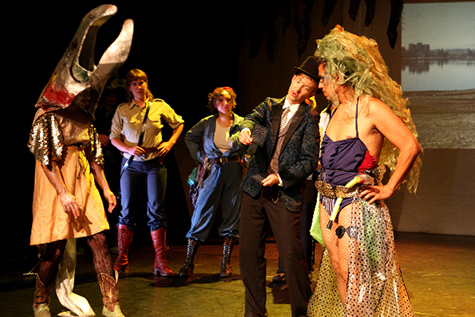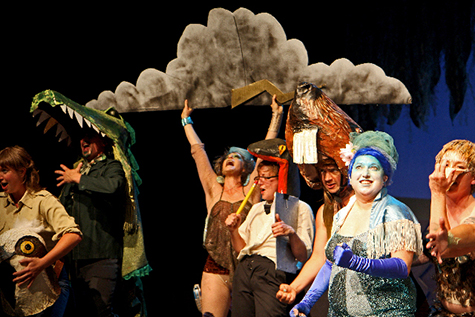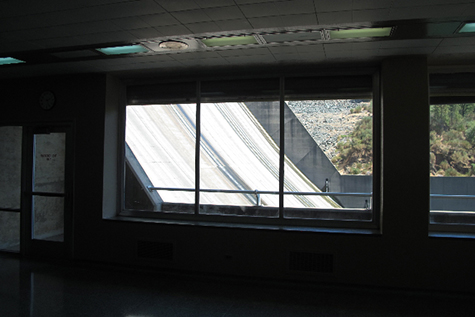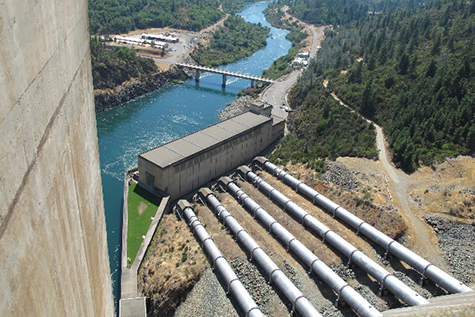Between Storms
page 1
Introduction and photographs by Cleo Woelfle-Erskine
Slideshow text by July Cole and Cleo Woelfle-Erskine

Water that falls on land within geographical "California" flows to the Pacific via rivers that carve the Coast Range. It flows to the Great Basin in Mono and Owens lakes, alkali vestiges of great, fresh Pleistocene lakes. It rushes in sandy washes down the long Mojave piedmont to the Colorado and thence (in a wet year) to the Gulf of California. In Death Valley it flows nowhere but down, mostly evaporating from shimmering puddles of brine.
"California" the political entity—the boosted empire, golden nightmare—gathers all that water and more. Throughout the twentieth century we Californians extended our reach, first to capture the eastern Sierra's snow at Owens and Mono, then to dam the Colorado, the Trinity, the Eel, and all but one tributary to the Sacramento. Now the northern snows are internal refugees in L.A. faucets.
In the Bay Area, during a rainy week in December, friends (and strangers) tell me "We need the rain." In Oakland, as in every major California city, no summer rain waters our gardens or feeds our municipal springs. In California, rain is useless for agriculture, murderous in flood control channels, and toxic once it hits our streets. Do they reckon, prosaically, that Oakland rain means Sierra snow, and thus water for winter and summer gardens? or hope to dampen late-smoldering fires? Maybe my friends crave a connection with the weather here, where no one takes dip in the creek or a sip from the spring.
From time immemorial, storms sculpted waterways through ranges from the Siskiyous to the San Gabriels. Storms slid coastal hillsides into rivers. Floods reworked shifting riverbeds, signaled spawning (salmon in the Klamath, steelhead in the Matilija), and built roiling ramps over waterfalls. Sausal and alamo along all the little creeks grew roots to chase the ebb flow. Storms buried the high mountains in snow that, melting, transformed creeks into rivers, rivers into torrents, the Central Valley into a marshy maze, and made Tulare an inland sea.
These landscapes have vanished from collective memory. If we know them now it is through disaster: the 1997 and 2004 levee breaches in the Delta; the 1938, 1952, 1969, 1983 and 1998 floods that conjured Tulare Lake in Kern cottonfields; the Sacramento and Los Angeles floods (in 1983 and 1934, respectively), when the rivers jumped their banks and drowned the outskirts of their namesake cities.
page 2
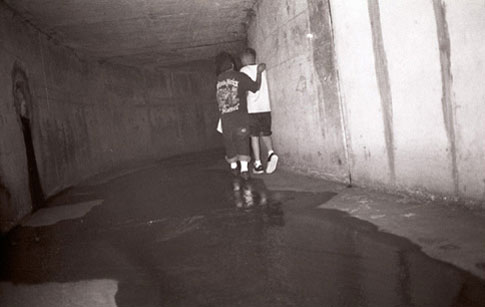
The dams have been built, the hills stripped, the delta drained and left to oxidize and subside. But this history lives in the sediment pulse from hydraulic mines moving slowly down Sierran rivers, in the fractured ground atop depleted aquifers, in our mercury-heavy blood. So far in California nothing has stopped the incremental damage or begun repair of degraded places. As long as this legacy of California's colonization and industrial development is forgotten, the future must deepen the damage past the point of reversibility.
At the 20th century's close, dams were already failing economically and politically, and sometimes structurally. Salmon runs, Native lifeblood and priceless common resource, were collapsing on the Sacramento, the Klamath, the San Joaquin, the Eel. Developers and agribusiness, who made a killing for a century, clamored for more of the same. They hijacked CALFED on the allegation that water markets could deliver water to farmers and cities and yield profits too. City dwellers, whose water is cheap, lacked motive to intervene, or even inquire. The resistance—farmworkers speaking for poisoned aquifers, tribes speaking for fish and wildlife, environmentalists urging limits to sprawl, farmers fighting for their way of life—could not find common cause. Now the Sierra snowpack ("California's largest reservoir"), is shrinking. As climate patterns shift, as soot darkens snowbanks, the snow grows thinner and melts five days earlier each year. The snow's retreat will leave hundreds of dams orphaned—like Albanian bunkers after Hoxha's demise—unless we build more "storage, more dams.
page 3
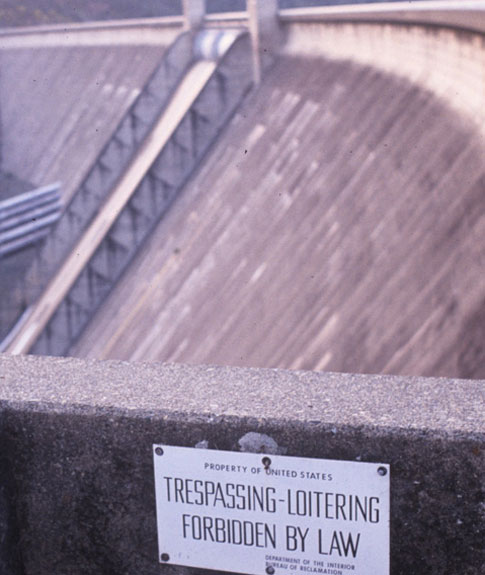
In California, the 21st century opened with a relentless barrage of socio-political storms that might well eclipse the (un?)natural weather. Drought and irrigation shutoffs in '01 brought federal marshals to guard Klamath ditches from racist vigilantes. Against biologists' recommendations, the farmers got their water the next year, and 20,000 spawning salmon suffocated near the river's mouth. In 2003, Imperial Valley farmers made millions selling water to San Diego, and farmworkers watched their livelihoods dry up with the ditches. The Bureau of Reclamation made full deliveries in a series of dry years, then announced plans to raise Shasta Dam to stave off drought. The expansion would drown sacred Winnemem Wintu sites spared in 1936. In '04, as Winnemem danced Hup Chonas, a war dance against the dam, reservoir levels on the Colorado dropped precipitously, threatening lawns from Las Vegas to Los Angeles. In 2005, motivated by a $100 million repair bill for the 2004 Jones tract levee breach, the governor declared a state of emergency in the Sacramento-San Joaquin Delta, and appointed a task force to fix this keystone ecosystem and "conveyance structure" of the state's waterworks. The next year the Delta smelt hit rock bottom, a federal judge cut off irrigation deliveries, and pistachio orchards withered in Fresno.
page 4
If California is a stronghold of Dam Nation, then the fight to save Mono Lake by limiting Los Angeles' diversions became a key early victory for the water underground. Into the labyrinthine doublespeak of California water—where reclamation means drowning floodplain wetlands under dams, efficiency means keeping runoff out of rivers and aquifers, and "waste" is any water that reaches the sea—Mono Lake activists inserted the notion that water constitutes a "public trust." A judge agreed that Los Angeles must limit water diversions to protect the Mono ecosystem. But the doctrine never entered into state or federal water project management until the Delta crisis loomed. The governor's special task force explicitly referenced the public trust doctrine, asserting that in the Delta, "the ecosystem and reliable water supply are primary coequal goals." 1

Should this recommendation become law (no small feat), it will turn a century of western water management on its head. Some minimum flow of water will remain in the rivers. Floods essential to ecosystem recovery will coincide with snowmelt and summer thunderstorms. Farmers and municipalities will divide the remaining water according to established doctrines of prior appropriation and riparian rights, and water will likely increasingly flow between them at the whim of the market. At best, such recognition would codify Vandana Shiva's observation that "Water is created in nature and not in markets" 1 and lead to protection and eventual restoration of the watersheds and aquifers that catch, clean, and store it. At worst, minimum flow and restoration requirements won't revive the state's waterways, and politicians will continue along the 20th century path of shifting water from farms to cities, burning coal for power, and exporting industry to Dam Nation's frontiers in China, Ghana, Paraguay.
In the high stakes game of California's water, the water underground wagers culture change against Dam Nation's proposed and decaying infrastructure. The Los Angeles Department of Water and Power complied with the Mono Lake decision through conservation strategies both micro-infrastructural (think low flow toilets) and cultural (the slogan "Don't let L.A. drip dry" impressed me at age 6); L.A.'s Department of Water and Power currently promoting conservation over desalination and more dams. On the other side, Governor Schwarzenegger and others are banking mostly on infrastructure, pushing for a peripheral canal in the Delta and $3 billion for new dams.
During the fight against Itoiz Dam, Spanish economist Pedro Arrojo-Agudo challenged Spanish citizens to imagine and build a "nueva cultura de agua"—a new water culture—in which people's connections to their local water sources and cycles radically transforms habits of water use. "There's a song in Spain that says, ‘El cariño verdadero ni se compra ni se vende,'" he remarked. "True love cannot be bought or sold. We have a lot of values in the world that are not counted in the market." As Californians discover the histories of the Colorado delta, Glen Canyon, the Winnemmem homeland on Shasta river, and the wetlands fringing the San Francisco Bay—all now hidden beneath the artifacts of Dam Nation—we may decide they possess essential value.
page 5

Arrojo-Agudo's beloved Ebro has only one dam, Itoiz. In Spain, the fight against Plan Hidrológico Nacional, which would add 120 more, catalyzed citizens' desires to take a new path. In California, where nearly every river is "fully appropriated, a new water culture must shrink our watershed to where we can walk its ridges and follow the rain when it falls. Until the rain regains value, it won't fill our cisterns, water our gardens, or feed our springs.
The piece that follows grew from a desire to craft a new water culture in our corner of Dam Nation. In some sense it's a distillation of the anthology Dam Nation: Dispatches from the Water Underground, which links personal use and community watershed relationships inextricably with the most gargantuan official water projects.
Dam Nation editors and contributors traced connections between the American West, where big dams started, and the East, where they are fully integrated into the electrical grid. "Whether a river is being interrupted by a huge reservoir or tapped for hydroelectricity, or whether water is being pumped out of the ground, bottled in plastic bottles, and sold at the supermarket, or whether a bay or river is being turned into a dumping ground for municipal sewage or industrial waste, we identified the same philosophies of water use behind very different kinds of water projects in disparate locations, we said when introducing the slideshow. The philosophy is, of course, Manifest Destiny.
On tour, we explained the connection thus: "The right to water is the most basic human right. Water is the lifeblood of the planet, and the fight for water is a social justice struggle at the intersection of political power plays and environmental science. This struggle is fought by people in China, Guatemala, and India being displaced by giant dams, by farmers in California's Central Valley who are being poisoned by agricultural runoff in their drinking water, by traditional fisherfolk fighting for the return of migratory fish blocked by mega-dams around the world."
What follows is a transcript of our "live action tour of the water grid", a slideshow for two voices, written by July Cole and Cleo Woelfle-Erskine and performed in June 2007 by the authors and Annie Danger at bookstores throughout the Northeast U.S.. In lieu of the analog slide projector's click and whir and sequence of slides, panoramic photographs unveil the Dam Age legacy in California.
page 6
[Transcript]
Voice 1 If you live in Dam Nation, your water doesn't fall from the sky, flow down a stream, or rise from under ground, but takes a longer, more tortured path. If you live in Dam Nation, almost everything you consume is intricately dependent on that same water grid: your electricity, and the electricity that powers the factories that produce the products that you buy, the food that you eat, grown with pesticides and chemical that pollute rivers, irrigated with water from rivers or underground aquifers. And if you live in Dam Nation, your wastes will not return to any natural cycle, but add their insult to the injuries already done to your watershed.
Dam Nation was founded on the precepts of Manifest Destiny,
Voice 2 Rain Follows the Plow
V1 . . .the empty propaganda of the 1840s that eventually turned into guidelines for growth and expansion.
V2 The savage must ever recede before the man of civilization. The square mile which furnishes game to the single family of hunters, will support a thousand families by agriculture and the mechanic arts! —George Lepner, 1845
V1 When the Manifestly Destined looked out over the land, they saw deficiency, an incongruity between what was there and what was familiarly useable. The functioning commons, the dynamic equilibrium of fire-managed forests and prairies, the intricate stewardship and sharing of a river's salmon runs between dozens of autonomous peoples, rejected as impossible, these had to be denied, and if necessary eradicated, by the plow, the canal, the grid of 160 acre homesteads. The key to expansion within our own borders was control of the waterways: for domestic supply, for irrigation, for transportation, and eventually for hydroelectricity generation and industrial development. Even otherwise progressive figures could see no other way.
V2 All of the waters of all the rivers of the West will eventually be diverted from their natural channels. John Wesley Powell
V1 Dam Nation consolidated itself in a frenzied century of dam building, levee raising, river diversion, and groundwater pumping. Supporting small farms justified many projects, but small farmers were swept out of the picture as large agribusiness ventures shaped the projects to their benefit.
The cities of Dam Nation, suckled on the reservoirs and aqueducts, sprawled out across even arid lands, glistering in newcomers' minds like the impossible dreams they were, and personal water consumption swelled to suck up every available supply.
The grid of Dam Nation ties country to country and continent to continent.
V2 A country is a company, a company is a country. They are the same, the management is the same. Thaksin Sunawatra, Prime Minister of Thailand.
page 7
V1 Manipulation of rivers and privatization of waterworks are strings tied to IMF and World Bank projects. Mass displacement of people, and loss of social networks and livelihoods, and destruction of river ecologies are the price extracted for citizenship in Dam Nation.
Where there is a dam, there is resistance, a Water Underground that wears away at the river's obstructions, and wants the watershed back for its own.
V2 This is the Water Underground, as it seeps through fissures, wicks through interstitial channels of soil or stem, and surges through channels and seas.The dams have been built. The suburbs sprawl out onto dry plains. Farmers finally have a common enemy, cities with the political power to suck up all the water the West can give and still keep growing. My own city is one of them, possessing a relentless power to turn stream to storm drains, oak and water and rock to freeways, and subdivisions, and live-work lofts. The farmers fight to keep water by raising cattle, juggling numbers, and sending letters to Congress. The salmon fight by swimming. In the spring, millions of salmon smolts wash downstream past slackwater reservoirs and through chutes that jet them out over locks and dams. Their heads point upriver, smelling the sequence of scents of the tributaries they pass, so that one day they can find their way back. They follow the ghosts of smolts dead by turbines and the false currents of irrigation diversions, ghosts who show them how to feel for the river's real channel. Against all odds they'll make it, as long as there's water.
The wild keeps on living, paved over, constricted, fragmented, laced with poison, degraded, disappearing. The ghost fish far outnumber the living. Their ranks are growing: qapdo, c'waam, silvery minnow, Chinook, Colorado chub. To survive in these times, one must either turn away from the human gift of foresight to the comforting blue glow of the Nature Channel, or place a lot of faith in ghosts.
This is the water underground as it leaps photon-charged to rise and rise to clouds seeded with lofted forest pollen and insect duff, that falls and runs down streams that shelter salmon and sturgeon, oyster and otter, whose bodies, consumed and spread across the land, return nutrients long washed to sea. Here, at the end of the salmon's journey, we can do something.
I don't know if the salmon can make it another 50 years, a Karuk elder says. These dams are up for relicensing now. With the bang of a gavel, their relicensing could be ensured. With support on the ground, these legal victories could lead to momentum for broader change. Empires crumble slowly. Small acts of resistance accumulate. Water collects behind a dam. It finds its way into cracks and crevices, probing, moving. Pressure builds.
Before the storm of America swept down on the Modoc, the O'odham, the Klallam, and the Lakota, they had only legends and vague rumors of what was to come. The whirlwind that swept over left a world completely transformed. In the blink of an eye, another storm could trigger a flash flood that rushes across pavement, comes down a sheer sandstone canyon, and builds into a wall of water that slams into those cracks. Maybe the ghost fish, after a century of beating against dams with their heads, will finally wear them down.
Point Reyes, CA, 8.14.04/ Missoula, MT 2.16.09
footnotes
| 1 | Governor's Delta VisionBlue Ribbon Task Force, Final Delta Vision Strategic Plan, November 11, 2008. Available at: http://deltavision.ca.gov/StrategicPlanningDocumentsandComments.shtml#FinalDraft. Accessed 2.16.09. |
| 2 | Interview with Dr. Vandana Shiva on "NOW with Bill Moyers, PBS, September 5, 2003. Transcript at http://www.pbs.org/now/transcript/transcript_shiva.html. Accessed 2.16.09. |
RELATED PLACES MONO lake, Central Valley, Mexicali, Calexico




